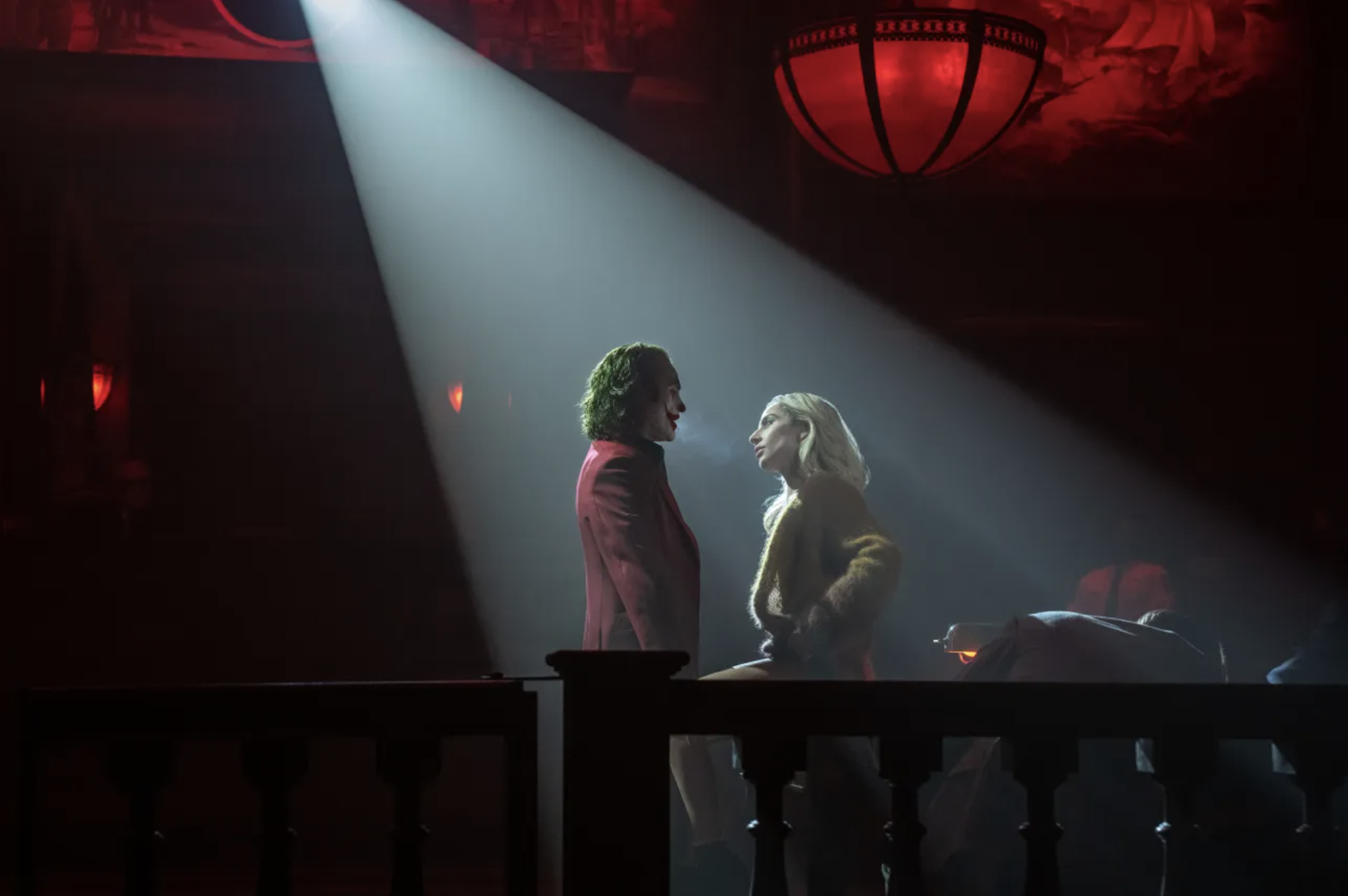
News
Summers Will Not Finish Semester of Teaching as Harvard Investigates Epstein Ties

News
Harvard College Students Report Favoring Divestment from Israel in HUA Survey

News
‘He Should Resign’: Harvard Undergrads Take Hard Line Against Summers Over Epstein Scandal

News
Harvard To Launch New Investigation Into Epstein’s Ties to Summers, Other University Affiliates

News
Harvard Students To Vote on Divestment From Israel in Inaugural HUA Election Survey
‘Joker: Folie à Deux’ Review: You Get What You Deserve
Dir. Todd Phillips — 2 Stars

“Joker: Folie à Deux,” the sequel to the Academy Award-winning 2019 film “Joker,” has hit theaters, but audiences are laughing for the wrong reasons. The film picks up immediately after the events of “Joker,” following Arthur Fleck (Joaquin Phoenix) as he crafts an insanity plea to escape the death penalty. While in prison, he finds a twin flame in the form of Lee Quinzel (Lady Gaga). Phoenix and Gaga’s incredible acting — as well as director Todd Phillips’ clear passion for the project — set up “Joker: Folie à Deux” as an exciting continuation of the first film. Nonetheless, the movie’s lack of thematic vision, poorly crafted script, and self-indulgence make the Joker’s second punchline fall disappointingly flat.
The film has all of the elements of an excellent film within itself, even if these elements don’t mesh well together. Phillips clearly wanted to push the boundaries of a supervillain film, choosing to play with interesting visuals and cinematography choices throughout the runtime. The film utilizes its Warner Bros. connection and begins with a cartoon version of the Joker and his crime — an unexpected choice that demonstrates the absurdity of Arthur’s choices and position. Beyond this, Arthur is obscured by various objects in creative ways — behind car windows, through the bars of a prison, behind the pixels of old-fashioned televisions, in elaborate TV musical productions — emphasizing his internal distance from reality. The cinematography — headed by Lawrence Sher — was also used in smart ways to depict Arthur’s mental state. Bright color is used to signify Arthur’s fantastical dreams, while warmth is associated with his love for Lee — which makes sense since she is prone to pyromania.
Joaquin Phoenix and Lady Gaga, the two leading actors, also bring their all to the film. Phoenix won an Oscar the last time he played Joker; in this second installation, he continues to bring complexity and disturbing intensity to the role. Once again, Phoenix physically transforms for the role, with dramatic weight loss and an eerie way of implanting mania into his eyes. Lady Gaga similarly feels effective as Lee Quinzel — she is quiet yet fierce, crazed, and obsessive. Her variations in mood are especially well-acted, showing Lee’s fluctuating mental state.
Unfortunately, these positive elements of the film are spoiled by the astoundingly awful script and the overall pointlessness of the production. The sequel’s predecessor felt extremely purposeful, with a goal to shed light on mental illness and the barbarism of everyday apathy. Every effective theme embedded into this film only echoes “Joker,” and new ideas — media cruelty, the failure of the court system, self-destructive relationships — are shallowly developed. The script — written by Scott Silver and Todd Phillips — makes each one of these themes feel painfully obvious. At times, it feels genuinely shocking to hear such clichéd words coming from the talented mouth of Joaquin Phoenix. New themes are overshadowed by the constant rehashing of the events from “Joker,” which feels unnecessary since most audiences will hardly have forgotten that movie’s explosive ending. It simply feels as if there was no clear reason for the film to be made, besides generating revenue for the DC Cinematic Universe.
Beyond these structural issues, the movie felt self-indulgent and excessive in its never-ending musical numbers. For some reason, “Joker: Folie à Deux” is a musical. This choice is not justified at any point in the runtime. While the songs are clearly meant to be a window into Arthur’s absurd and deranged fantasies, the point would have been made with only a few of these episodes. Instead, there are 15 musical numbers. They are not based on original music, but instead on vintage songs, and seem quite randomly placed. Every time Arthur begins to sing randomly, it feels as if you should begin to titter, but the laughs are produced for all of the wrong reasons.
Todd Phillips’s latest project simply can’t seem to justify its own existence. While there are some gems hidden in the mess — good cinematography and excellent performances — they can’t distract from the movie’s glaring issues. The film’s negative box office results are ultimately what “Joker: Folie à Deux” deserves — chiding for its self-indulgences and the wasted efforts of two incredible talents.
—Staff writer Hannah E. Gadway can be reached at hannah.gadway@thecrimson.com.
Want to keep up with breaking news? Subscribe to our email newsletter.
